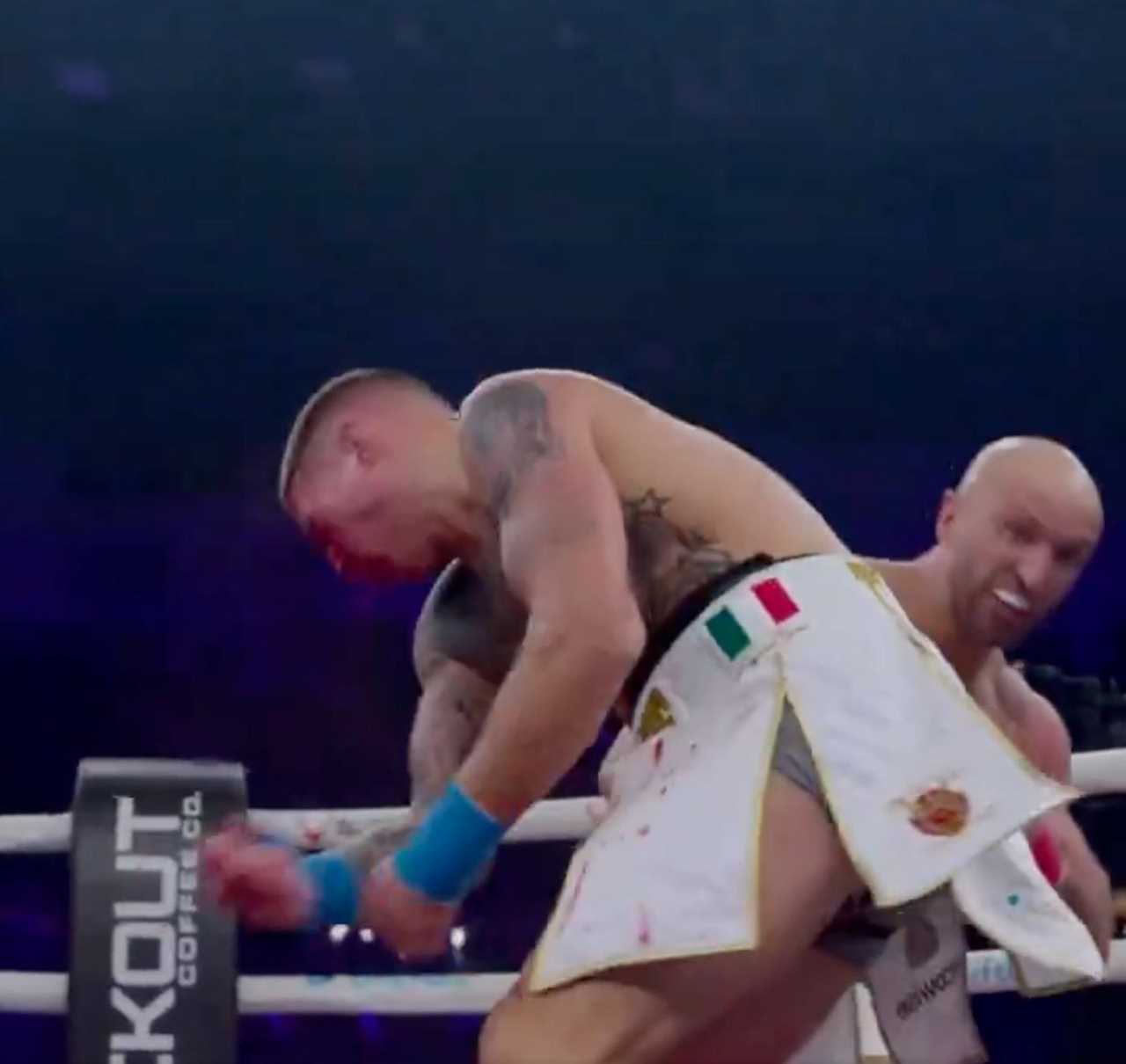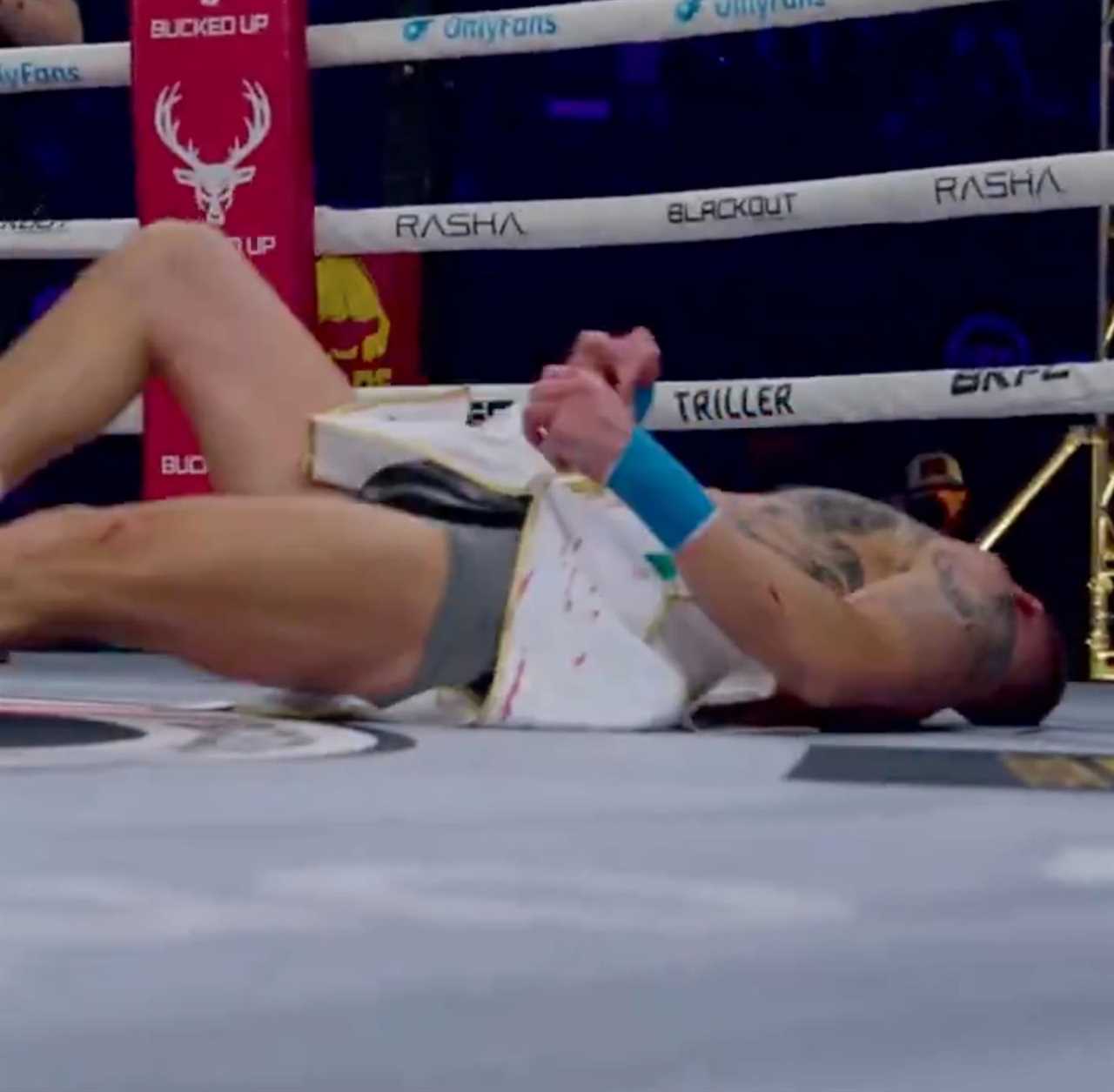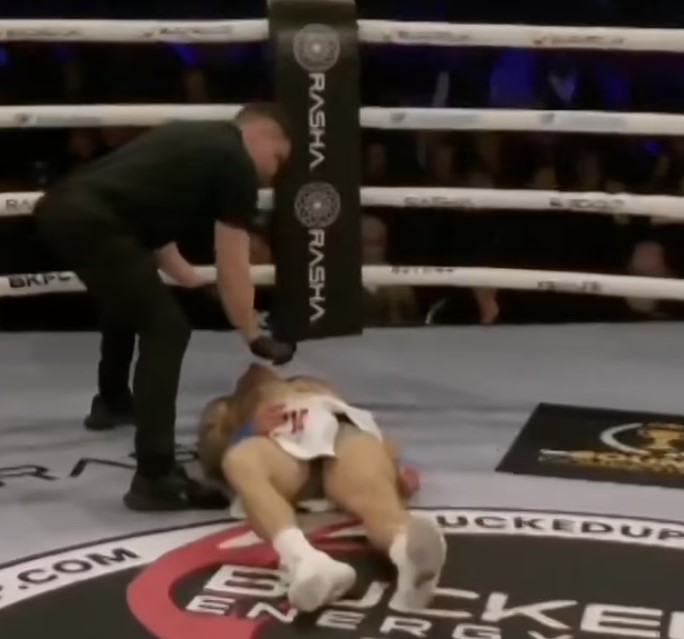
Brutal Knockout Leaves Stevie Taylor Unconscious
The bare-knuckle boxer Stevie Taylor experienced a harrowing moment in the BKFC Manchester showdown last Saturday. Less than two minutes into the fight, Taylor was struck by a powerful right hook from his cruiserweight opponent, Conor Cooke, sending him crashing to the canvas. The impact was so severe that Taylor was rendered unconscious before even hitting the ground.
Heartfelt Reaction from Conor Cooke After the Fight
Despite securing a decisive victory, Conor Cooke found himself overwhelmed with emotions post-fight. Speaking to talkSPORT, Cooke revealed the depth of his feelings, stating, "I was very emotional to be honest. I fight for my boys." His initial jubilation quickly gave way to concern for Taylor's well-being, prompting him to refrain from celebrating his stoppage.
Fans Breathe a Sigh of Relief as Taylor Rises
Witnesses at Planet Ice Altrincham were on edge as Taylor lay motionless on the floor, convulsing in distressing scenes. The crowd held its breath, fearing the worst, until Taylor eventually regained consciousness and was able to leave the ring under medical supervision. The collective tension among the fans transformed into relief as they watched him safely exit.
BKFC Confirms Taylor's Steady Recovery
In the aftermath of the intense match, BKFC provided updates regarding Taylor's condition, assuring fans of his ongoing recovery. Medical teams promptly attended to him after the knockout, and reports indicate that Taylor is making progress. This assurance has helped quell fears surrounding the severity of the knockout.

Cooke's Record Improves to 5-1 Following the Clash
With this victory, Conor Cooke enhances his bare-knuckle boxing record to an impressive 5-1. His skill and determination were on full display during the fight, demonstrating why he remains a formidable competitor in the cruiserweight division. Despite the emotional toll of the match, Cooke's performance solidifies his standing in the sport.
A Fight to Remember for Both Boxers
The Manchester clash between Taylor and Cooke was a testament to the intense and unpredictable nature of bare-knuckle boxing. While Cooke walks away with a notable win, the event also highlighted the deep camaraderie and humanity within the sport. Cooke's reluctance to celebrate underscores the respect fighters have for one another, even in the heat of competition.
Looking Ahead: What’s Next for Cooke and Taylor
As both fighters move forward, questions arise about their future bouts and overall health. For Cooke, maintaining his winning streak will be a priority, while Taylor's recovery will determine his next steps in the ring. Fans and supporters will undoubtedly keep a close eye on both athletes as they continue their respective journeys in bare-knuckle boxing.
Community and Support Surrounding the Fighters
The incident has sparked conversations about safety and support within the bare-knuckle boxing community. Ensuring fighters receive proper medical attention and emotional support is crucial for the sustainability of the sport. Both Cooke's empathy and Taylor's resilience serve as reminders of the human element behind the fierce competition.

Conclusion: A Night of High Emotions and Raw Talent
Last Saturday's BKFC Manchester event will be remembered for its intense moments and the display of raw talent from both fighters. While victorious, Cooke's emotional response highlights the gravity of the sport, and Taylor's recovery offers hope amidst the brutality. As the bare-knuckle boxing scene continues to evolve, stories like these emphasize the blend of passion, pain, and perseverance that defines the fighters' journeys.
Frequently Asked Questions
How does a boxer progress from amateur level to professional level?
The transition from amateur boxing to professional requires a significant increase in training intensity and mental preparation. An amateur boxer is required to establish a record of success, usually by honing their skills at local and national contests. To be able to secure professional bouts, it is important to have a professional license in boxing and align yourself with experienced managers or trainers.
What is needed to start training as a professional boxer?
For anyone to start training in professional boxing they must have a commitment to fitness, discipline and an open mind. Initial training involves mastering the fundamentals, including stance, footwork, punches, and defensive techniques. It is important to join a reputable, professional boxing gym. The trainers should be experienced professionals who know the intricacies of competition. To develop their skills, new boxers will undergo rigorous conditioning drills as well as sparring and technique drills.
Are there age restrictions for learning to box professionally?
Professional boxing has age restrictions. Most boxing federations require that boxers are at least 18 to fight professionally. While there isn't a specific upper age limit, health and physical factors will limit how old you can compete safely and effectively. Before taking up a sport professionally, older athletes should be assessed thoroughly for their fitness and risks.
How important is mental toughness in professional boxing?
In professional boxing, mental toughness is just as important as physical fitness. Resilience, focus, pressure-handling ability, and psychological fortitude are all required in the sport. Mental preparation involves visualization, stress management techniques, and developing a strong mindset to confront the challenges within the ring. Without mental toughness, a boxer may struggle to perform optimally under the intense conditions of professional competition.
What is the basic training program of a Boxer?
A boxer’s routine is made up of several main components. They include technical skill building, tactical drills and strength and conditioning. Sparring and mental training are also included. Tactics drills help develop fighting strategies, while technique-focused exercises improve defensive maneuvers and punch accuracy. Training exercises increase athleticism and sparring gives you a practical fighting experience. Mental training builds confidence, focus and resilience.
Can anyone learn to box?
Even though boxing may be accessible to all, not everyone is cut out to compete professionally. Professional boxing requires a unique blend of talent, physical abilities, mental toughness, and dedication. Prospective boxers must also be willing to face the inherent risks of the sport. A thorough assessment by a coach can determine if a person has the potential to make a career out of boxing.
What are the risks of professional boxing?
As with any contact sport there are inherent risks in professional boxing. They include acute injuries, such as cuts and bruises, broken bone, head trauma, and potential chronic conditions caused by repeated impacts, such concussion syndromes, or neurological disorders. Proper training, safety equipment, and adherence to boxing regulations help mitigate risks, but they can never be fully eliminated. Boxing professionally requires you to accept and understand these risks.
Statistics
- The average age for boxers to turn professional is between 18 to 25 years, though many continue to compete well into their 30s and beyond.
- Research shows that a boxer's reaction time is typically under 0.25 seconds, honed through repetitive drills and sparring.
- Cardiovascular fitness is critical, with a focus on high intensity interval training, comprising up to 40% of a boxer's conditioning program.
- Reports suggest that successful professional boxers can earn upwards of 50 times more than the median purse for entry-level professionals per fight.
- Statistical data indicates that there has been a 15% increase in the number of professional boxing gyms over the last decade.
- Less than 10% of professional boxers are undefeated throughout their career, highlighting the sport's competitive nature.
- An analysis of boxing injuries suggests that 90% involve the head, neck, and face, emphasizing the importance of protective gear.
External Links
How To
Learn how to master the different boxing punches
Mastering a variety of punches is crucial for a professional boxing career. Focus on fundamental punches like the jab and hook. Each punch requires different body mechanics. Concentrate on precision and technique rather than force. Use a heavier bag to develop power and practice combos, while a speedbag will improve your timing and hand/eye coordination. Shadowboxing with emphasis on punch precision can be beneficial, and seeking feedback from a coach during mitt workouts will be invaluable to your progression.
Did you miss our previous article...
https://sportingexcitement.com/boxing/fury-targets-heavyweight-giants-in-comeback-bid
 CricketBoxingFormula 1GolfHorse RacingPremier LeagueTennisPrivacy PolicyTerms And Conditions
CricketBoxingFormula 1GolfHorse RacingPremier LeagueTennisPrivacy PolicyTerms And Conditions
